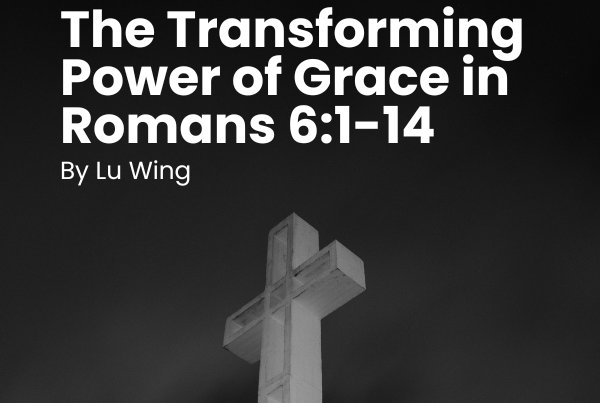
There’s a joke that Christians here in Ukraine like to tell. One day, a pastor goes to visit a class in the children’s ministry at his church. He’s trying to break the ice with the small children and decides to play a guessing game. “Kids, who can tell me what lives in the forest, has pointy ears, a big bushy tail and climbs trees?” The children are awkwardly silent, afraid to answer. Then finally one brave, young boy raises his hand. “Well, I know the right answer is ‘Jesus’, but it sure sounds a lot like a squirrel.”
I lead preaching labs with City to City Ukraine. Our goal is to help preachers craft Gospel-centered sermons. Sometimes I run into a question much like the joke above. “What if all I see in the passage is a ‘squirrel’?” What if that’s all the writer saw? If Christ isn’t mentioned in the passage, aren’t we twisting the meaning of Scripture if we read Him in? Aren’t we supposed to be directed by the author’s original intent?” The desire to avoid reading something into the text that’s not there is a good one. We should be on guard against it. But is that what a Christ-centered approach to Scripture is doing? Or, on the contrary, do we have a biblical mandate to search for Christ in passages that don’t directly mention Him?
The Divine Authorship of Scripture
Whenever we approach a passage of Scripture, we always come at it with a specific set of assumptions. None of us is free from our own tradition or culture. But hopefully, we are open to refining our assumptions based on what we find in Scripture. For example, Scripture itself tells us that it is God-breathed (2 Timothy 3:16). So we approach Scripture with the understanding that it is not merely the words of men, but also the Word of God. New Testament scholar Vern Poythress writes, “Whether or not they were perfectly self-conscious about it, the human authors [of Scripture] intended that their words should be received as words of the Spirit.”1 That means Scripture’s meaning is not defined solely by the human author’s intent. In fact, that approach is actually ignoring their intent, because they intended us to understand their words as being words from God. To agree with the intent of the human authors, we must recognize their words as more than the product of those authors.
One Passage, Two Authors
Every passage of Scripture has not one author, but two: the human author and the divine Author. So to understand the full meaning of a passage, we must ask not only what the human author’s original intent was, but also what God’s intent was. Some people argue that the intent of the human author and the divine Author must be identical. Walter Kaiser is one such scholar. He writes, “The Bible can have one and only one correct interpretation and that meaning must be determined by the human author’s [intent].”2 Kaiser is trying to make sure that we don’t read our own ideas into the text. That’s a right and admirable goal. And though his approach might safeguard us against fanciful additions, it’s over-simplified. Scripture does not give us grounds to make a one-to-one correlation between human authorial intent and divine authorial intent.
First, there are biblical examples that contradict this over-simplification. There are passages where God has an intention that the human writer didn’t understand. One of the clearest examples is Daniel. Daniel is faithful to record the visions God gives him. But he explicitly states that he did not understand their meaning (Daniel 8:27;12:8-9, etc.). Sometimes Daniel gets an explanation, sometimes not. And even when there is an explanation, Daniel says he still doesn’t understand what God means in these words. These examples show without a doubt that God’s intention in Scripture sometimes goes beyond the human author’s intention.
It’s also worth considering how the New Testament authors use the Old Testament. For example, Matthew quotes a line out of Hosea 11, “Out of Egypt I called my son” (Matthew 2:15). Matthew goes on to tell us that this is actually fulfilled in Jesus being taken to Egypt and then returning after the death of Herod. In other words, the full meaning of this phrase is found in Christ. But in Hosea, there’s not even the slightest hint that this phrase has anything to do with Jesus. It’s actually used to describe how God historically brought Israel out of Egyptian slavery. And yet, Matthew tells us that this phrase was ultimately intended to point toward Christ. And we don’t get to argue, because Matthew is Scripture too. When Hosea wrote these words, it seems highly unlikely that he was thinking about Jesus. But the New Testament shows us that this Christ-centered meaning was part of the divine intention. The full meaning here, as in all Scripture, is found in its reference to Christ.
This brings up another interesting question: Where should we get our model of Bible interpretation? Ironically, sometimes those who would call us to faithful Bible interpretation ignore the New Testament’s own model of interpretation. Usually by “faithful interpretation” they mean a strictly grammatical-historical approach that acknowledges only the human author’s intent. But as we’ve seen, the New Testament authors approached Scripture with an understanding of the divine authorial intent that at times goes beyond the human author’s intent. They also understood the divine intent to be ultimately Christocentric. So if we really want to be faithful to the Bible, we must use the Bible’s own interpretive model. We cannot neglect the overarching, Christ-centered divine intent.
What We Should Look For
None of this is to say that the human authorial intent can or should be abandoned. On the contrary, God’s intended meaning cannot contradict the human authorial intent. If it could, this would be a mystical approach to Scripture where we just import our own preferred ideas and the human author’s words mean nothing. Let’s be clear: There is no genuine divine meaning which would contradict the human authorial intent. But that also doesn’t mean it stops with the human intent.
On the other hand, as we’ve seen, Scripture supports the idea of a divine meaning which the human author doesn’t always fully understand. In this sense, the term “grammatical-historical plus” used by professor E. Earle Ellis to describe the New Testament authors’ interpretive model is fitting. The fuller meaning of Scripture is just that: fuller than mere human intent, but never contradictory to it. God may intend more than the human author does, but never less and never at odds with the human author’s intent.
The authors of the New Testament use Old Testament Scripture, understanding that the goal of the divine intent in any passage is Christ Himself. The meaning of a passage cannot be detached from the overall revelation of Scripture which culminates in and centers on Christ Himself. He is the ultimate and final revelation of God (Hebrews 1:1-2). Jesus points this out in his rebuke of the Pharisees, saying, “You search the Scriptures because you think that in them you have eternal life; and it is they that bear witness about me” (John 5:39). Christ is the eternal Word of God. He is the ultimate goal of the divine intent in revelation. As we study the Scriptures, both for ourselves and in preparing sermons for our churches, may our eyes be open to the fullness of God’s intent in pointing us to Christ in every passage.
Notes:
1 Vern Poythress, “Divine Meaning of Scripture”.
2 Walter Kaiser, quoted in Jared Compton, “Shared Intentions? Reflections on Inspiration and Interpretation in Light of Scripture’s Dual Authorship”.






